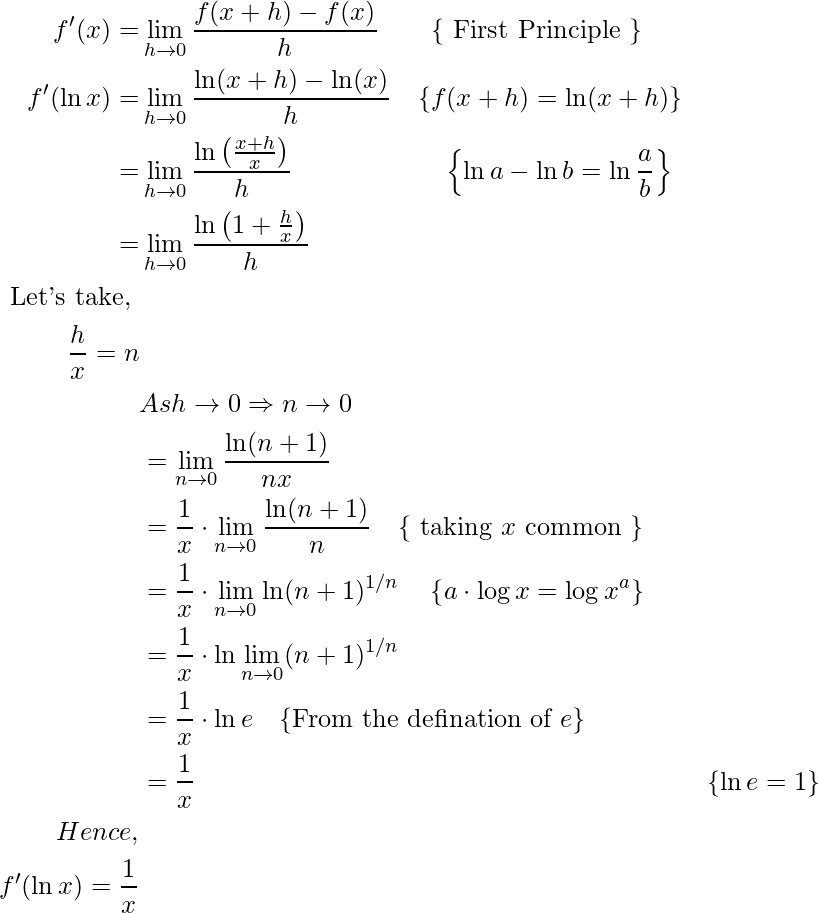Proofs for the derivatives of eˣ and ln(x) – Advanced differentiation
Last Updated :
15 Dec, 2020
In this article, we are going to cover the proofs of the derivative of the functions ln(x) and ex. Before proceeding there are two things that we need to revise:
The first principle of derivative
Finding the derivative of a function by computing this limit is known as differentiation from first principles. Derivative by the first principle refers to using algebra to find a general expression for the slope of a curve. It is also known as the delta method. The derivative is a measure of the instantaneous rate of change, which is equal to

e in terms of limit
The number e, known as Euler’s number, is a mathematical constant approximately equal to 2.71828. The discovery of the constant itself is credited to Jacob Bernoulli in 1683 who attempted to find the value of the following expression (which is equal to e).

Proof for the Derivative of ex

Example 1: Find the derivative of  ?
?
Solution:
By the chain rule,

Example 2: Find the derivative of  ?
?
Solution:
Use here the quotient rule:

Proof for the Derivative of ln(x)

Example 1: Find the derivative of 3ln(x)?
Solution:
3ln(x)’ = 3(1/x) = 3/x
Example 2: Find the derivative of ln(x)/5?
Solution:
(ln(x)/5)’ = 1/5(ln(x))′ = (1/5) (1/x) = 1/5x
Like Article
Suggest improvement
Share your thoughts in the comments
Please Login to comment...